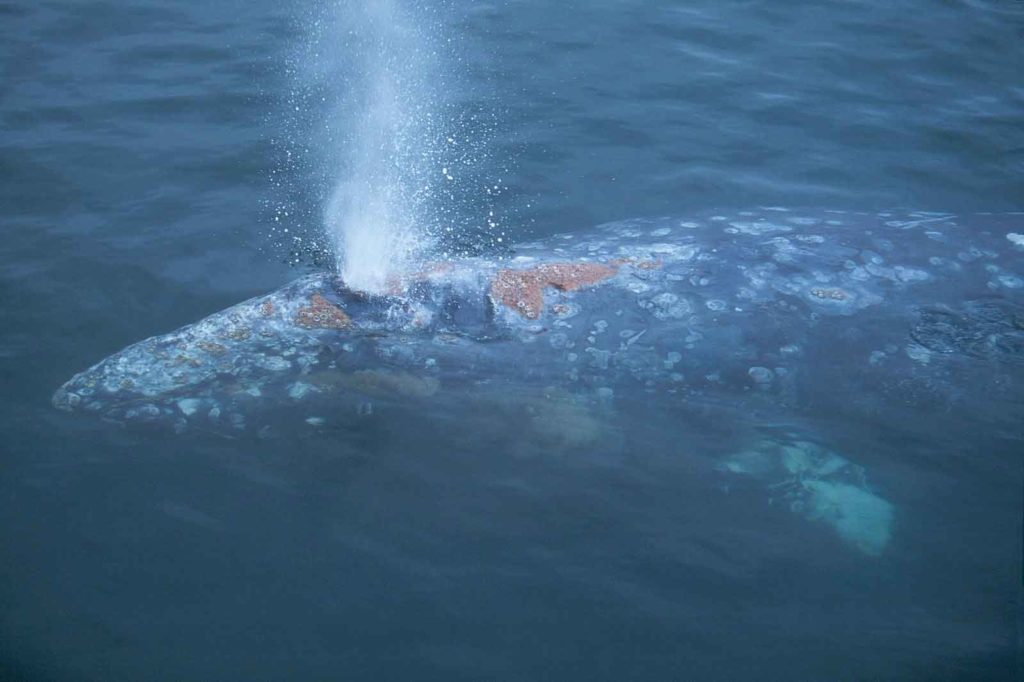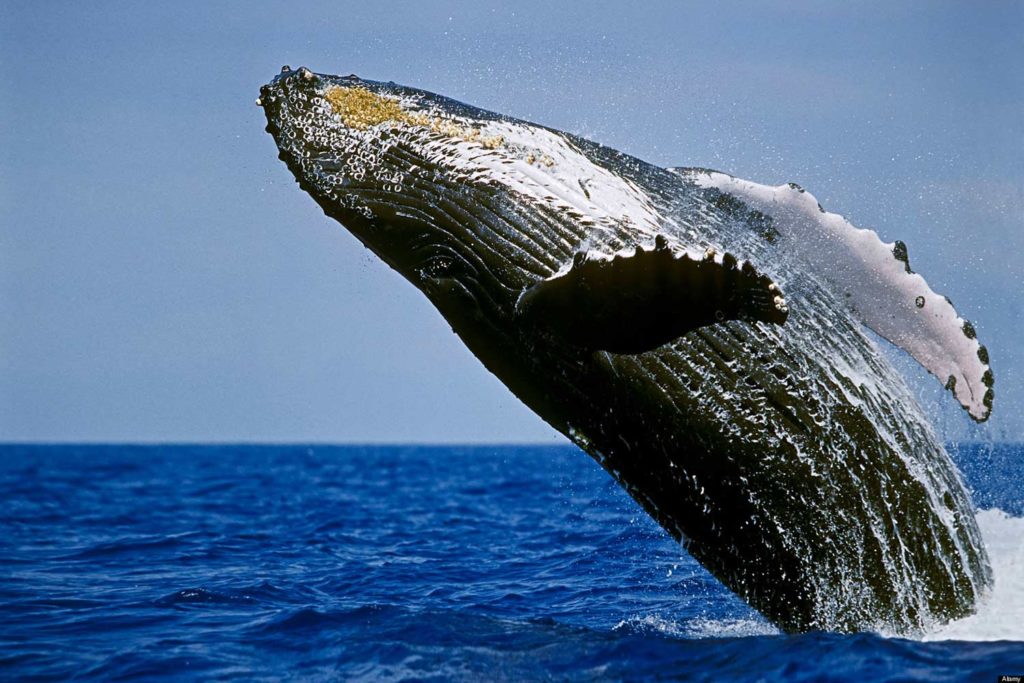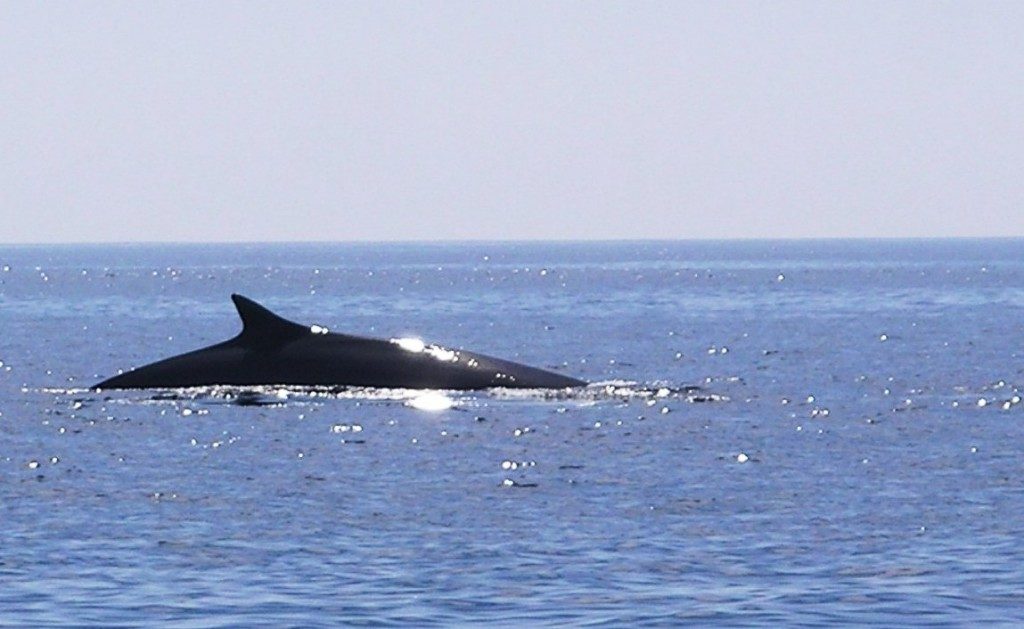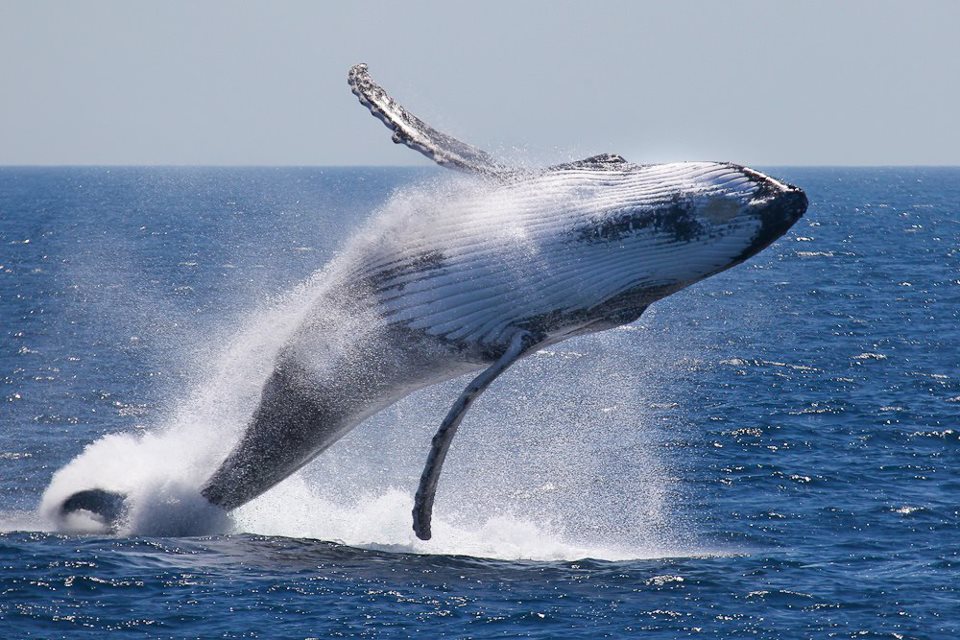Whale Watching in Oceanside, CA
There’s nothing like seeing a breaching whale up close in person or the cheer from the crew “thar she blows.” We specialize in small groups on the Bueno, no large crowds or noisy engines will ensure a very personal experience as you witness the annual migration of the Gray whales, Humpback, Fin Back and Blue whales that swim in our local waters during their annual migration.

Gray Whale
Gray Whales
The mature Gray Whales average 30 to 40 feet in length and can be found in shallow waters close to shore while feeding. They pass our shore twice each year during their southern migration and again while heading north back to their homes in late summer. They can be identified by their white and gray markings along the snout and the 3 to 5 shallow baleen plates that run along the lower jaw and the absence of any dorsal fin. Back in the early 19th century up to 1000 Grays passed our shoreline each day, they were susceptible to hunters because they are slow swimmers, stay close to shore and have a predictable breathing pattern. Captain Steve will carefully keep a safe distance while navigating along their course anticipating their next blow. These whales often take 3 to 4 short breaths before submerging for 4 to 6 minutes. They will show their flukes prior to a deeper dive and can stay under up to 15 minutes. Calculating their speed and course is very important for successful whale watching.
Humpback Whales
The Hump Back can be distinguished from the Gray by its dorsal fin, large ventral pleat area along the lower jaw and overall is much darker in color. Their fins or flippers are very long in comparison and can run up to one third the length of its body. They range up to 50 feet in length, feed close to shore and are very active with breaching, blowing and showing their flukes prior to sounding. Hump Backs are just as common as the Gray, and much more so than the Blue whales that also migrate along the same route

Humpback Whale

Finback Whale
Finback Whales
These whales are long and slender; their head is relatively flat and has paired blow holes.They are named after their pronounced dorsal fin which is their most obvious characteristic located two thirds the distance back from their head. Fin Backs are longer and bigger than Grays and Hump Backs, they range up to 80 feet in length, one of the largest whales in our waters which aids in identification. The Fin Back is also one of the fastest whales capable of swimming over 20 miles per hour. They rarely show their flukeswhen sounding, dive deeper and stay down longer than other whales, perhaps because they feed on the giant Humboldt squid that is found at deeper depths. They are second in size only to the Blue Whale.
Blue Whales
The largest mammal in the world is truly a site to behold, they average over 80 feet with the largest recorded at over 100 feet and can weigh as much as 150 tons.Their large triangular flukes are clearly visible when sounding;they are blue in color hence the name and are more often found in pairs. Captain Steve is most exited when encountering the great Blue; they are unmistakable due to their size and the blue halo emanating from their bodies. Not as common, the Blue whale is truly an awesome site to see. The unique blowholes are set in a large raised hump that acts as a splash guard; the blow is taller, over 20 feet high and straighter than other whales helping to identify them from a distance. Their cruising speed is 12 miles per hour and they can go as fast as 30 when they are in a hurry!

Blue Whale
